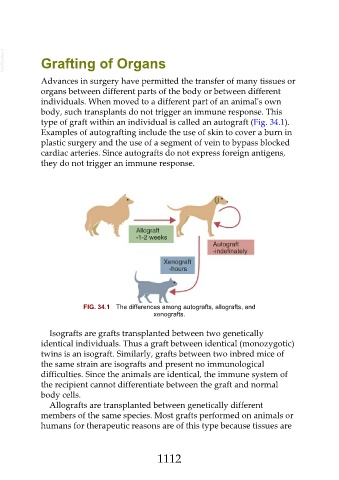Page 1112 - Veterinary Immunology, 10th Edition
P. 1112
VetBooks.ir Grafting of Organs
Advances in surgery have permitted the transfer of many tissues or
organs between different parts of the body or between different
individuals. When moved to a different part of an animal's own
body, such transplants do not trigger an immune response. This
type of graft within an individual is called an autograft (Fig. 34.1).
Examples of autografting include the use of skin to cover a burn in
plastic surgery and the use of a segment of vein to bypass blocked
cardiac arteries. Since autografts do not express foreign antigens,
they do not trigger an immune response.
FIG. 34.1 The differences among autografts, allografts, and
xenografts.
Isografts are grafts transplanted between two genetically
identical individuals. Thus a graft between identical (monozygotic)
twins is an isograft. Similarly, grafts between two inbred mice of
the same strain are isografts and present no immunological
difficulties. Since the animals are identical, the immune system of
the recipient cannot differentiate between the graft and normal
body cells.
Allografts are transplanted between genetically different
members of the same species. Most grafts performed on animals or
humans for therapeutic reasons are of this type because tissues are
1112

